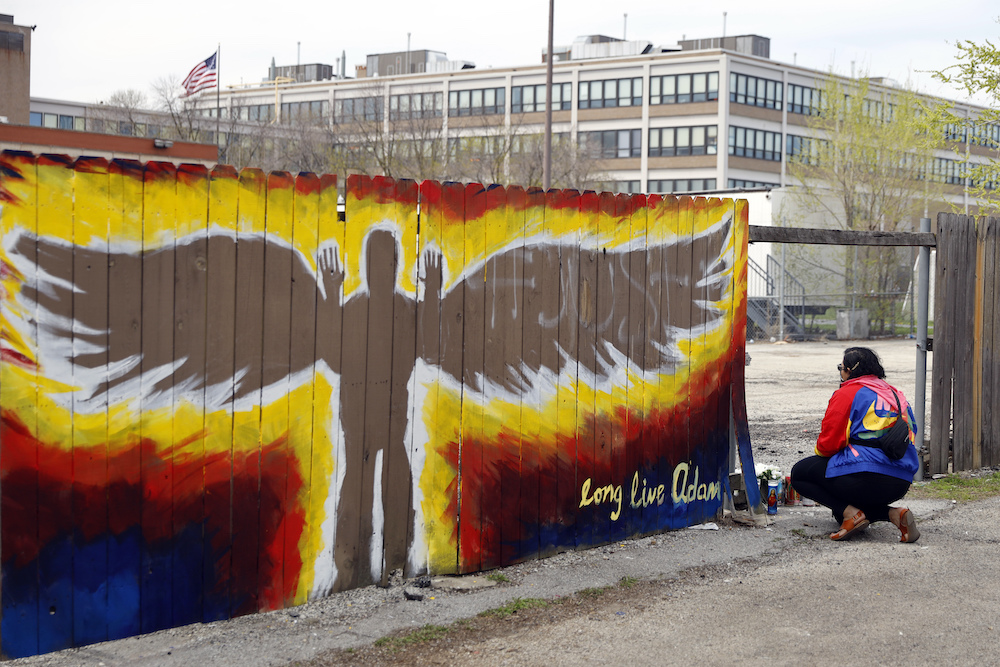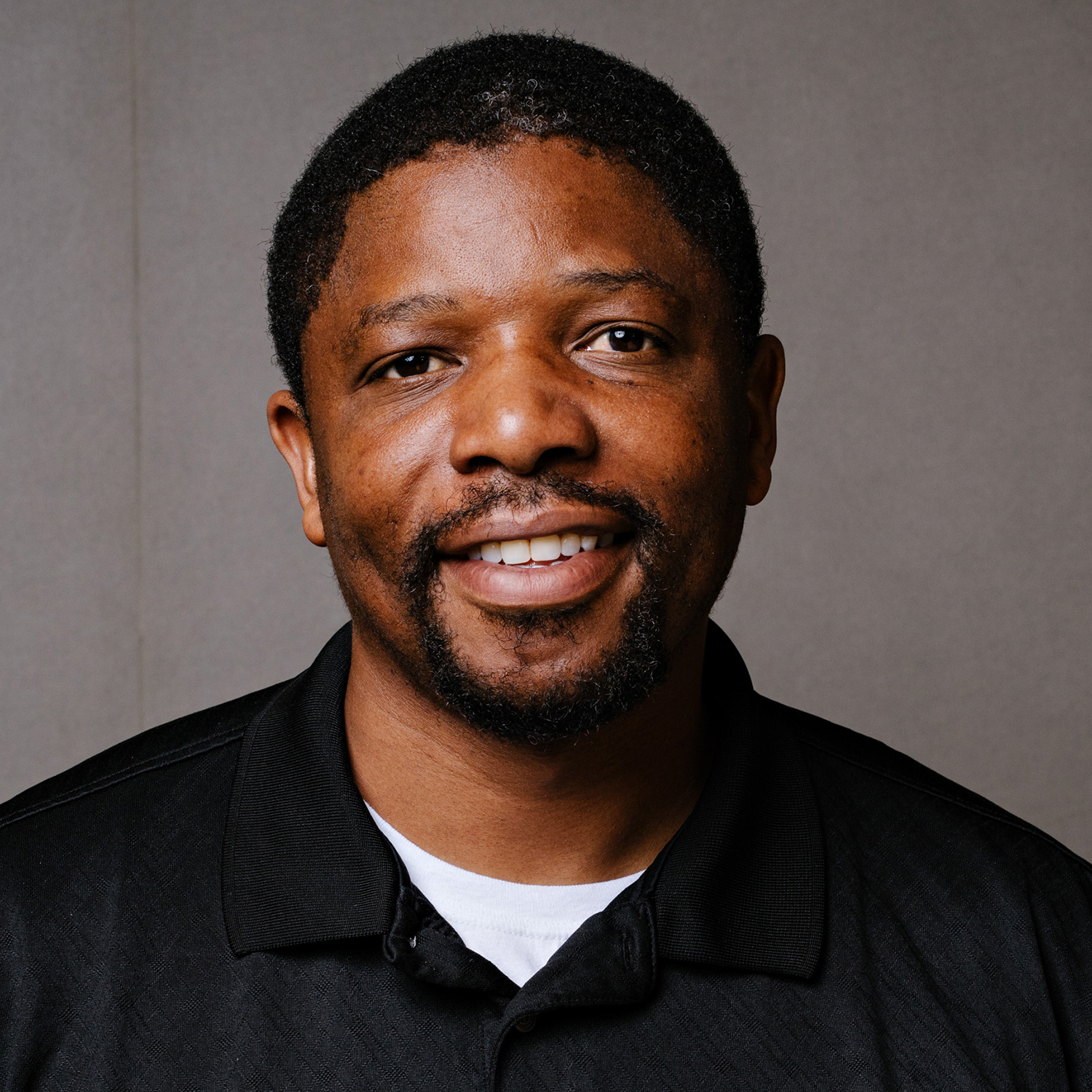
Andrea Fernanda Serrano kneels as she pays her respects at the site where 13-year-old Adam Toledo was shot by police, now marked with a mural in the Little Village neighborhood of Chicago on Friday, April 16, 2021
I started the video at about 5:01 and just let it play, as part of my Exploring Fake News journalism class at Davidson College this past semester.
The video was captured on the bodycam worn by the Chicago police officer who shot and killed 13-year-old Adam Toledo in March after a short foot chase through a dark alley in the dead of night. The shooting became the latest flashpoint in our ongoing reckoning with race, police brutality, and public safety. It was another case of a white cop shooting a young brown man in a city known all too well for police shootings and cover-ups and street-level crime, which often includes gangs who terrorize neighborhoods and kill more residents than police.
The country was still absorbing the murder of George Floyd by a police officer in Minnesota and wondering if he would be held to account. He eventually was, convicted on the three charges he faced. The debate quickly turned to whether the killing of Toledo was justified, if the cop should have waited the split second it would have taken to realize Toledo no longer possessed the gun he once had, or whether even asking such a question is unfair given the totality of the circumstances.
The officer was responding to a report of gunshots. He was in an alley late at night. It would have been a reasonable fear and deduction that he could lose his own life had he waited that split second to find out because instead of turning suddenly with hands thrust in the air, Toledo could still have had a gun in his hand. I told my students the second that event began unfolding, the chances of a “good” outcome dwindled.
But I didn’t linger there, on whether the shooting was justified, knowing that’s where most of the focus had been in the days since the shooting. That’s why I started the video at about the 5:01 mark and just let it play.
That part of the video was from the point of view of the officer just as he was getting up from his knees after trying to revive a bloody Toledo. He walked down the alley as medical personnel unsuccessfully tried to pump life back into Toledo’s body. He was quiet on his walk. He turned around to where Toledo threw away the gun on the other side of a wooden fence, momentarily shining his flashlight on the gun. Still, he said nothing.
The officer walked some more. Colleagues tried to console him. Still, he said nothing, though he was audibly panting, as if trying to catch his breath and steel his nerves. When he turned away from the police lights and the gaggle of law enforcement and medical personnel working on Toledo’s lifeless body, all you can see is his shadow on a barren concrete landscape. He eventually sat down next to the fence with his arms and hands hanging from his knees, still silent.
When I played it for my class, which included students who will likely be journalists in a few years and others who might be lawyers or doctors, they sat still, silent. They had never seen anything like it. And that’s a problem of our industry’s making.
The latter part of the video is the kind of perspective we have not done a good enough job of sharing with our audiences. Video of the officer chasing Toledo and Toledo thrusting his hands into the air that split second before a bullet penetrated his chest has been played or described by various media outlets countless times. Video of the aftermath, the final four minutes and 18 seconds of what was captured by the bodycam of the officer who shot Toledo, hasn’t been played nearly as much. That’s a problem.
Police shootings are exceedingly difficult events to cover well, particularly ones that unfold the way the shooting of Toledo unfolded. It’s always a tragedy, no matter the circumstances. In this case, a boy was taken far too soon. In this case, race played a prominent role, if only because of the skin color of those involved, during a nationwide discussion about race and crime and power.
In this case, like almost all the others, law enforcement officials got to tell the first story, even though we know they are often unreliable and sometimes purposefully deceitful. And in this case, unlike many of the other high-profile police killings that have made it into the national consciousness, this involved an actual life-or-death decision that had to be made in a split second after a report about gunfire, rather than after a driver failed to properly signal while changing lanes or had expired tags or an air freshener hanging from the rearview mirror.
All of those angles must be grappled with in our reporting, whether straight news or opinion. But that reporting will forever be incomplete if we don’t also introduce our audiences to scenes like the one in the final four minutes and 18 seconds of that bodycam video. Our job is to get as close to truth as possible and to convey it to our audiences accurately and fairly. We can’t do that if we don’t help our audiences understand the factors that keep leading to such events as well as giving them a sense of the aftermath.
I don’t know what audiences would take away from viewing that portion of the video. I suspect some would claim the cop was playacting for sympathy because he knew he was being recorded, while others would claim it humanizes a police officer. But we should focus on our audiences. Videos like this, used as part of broader coverage of such shootings, can illustrate something maybe nothing else can — that no matter what side you choose, in situations like these, there are no winners.
Maybe – maybe – that would inspire redoubled efforts to find solutions rather than remaining crouched in ideological corners that make solutions nearly impossible.
Issac Bailey, a 2014 Nieman Fellow, is a journalist, race relations seminar creator and facilitator, and the author of “Why Didn’t We Riot? A Black Man in Trumpland” (Other Press, October 2020).


